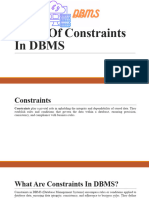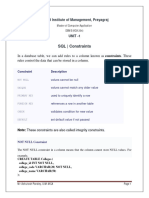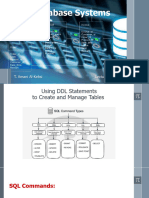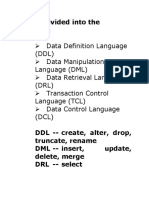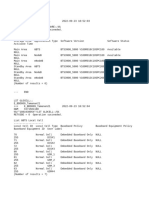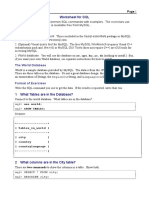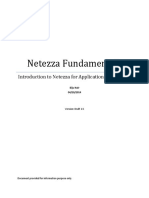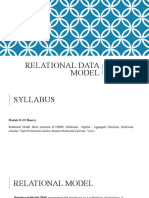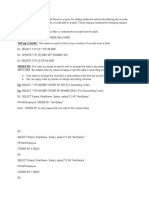0% found this document useful (0 votes)
41 views27 pagesDBMS Integrity Constraints Guide
The document discusses database integrity constraints including NOT NULL, UNIQUE, PRIMARY KEY, FOREIGN KEY and CHECK constraints. It explains how to define these constraints when creating or altering tables and provides examples of each constraint.
Uploaded by
yashika1587.be21Copyright
© © All Rights Reserved
We take content rights seriously. If you suspect this is your content, claim it here.
Available Formats
Download as PDF, TXT or read online on Scribd
0% found this document useful (0 votes)
41 views27 pagesDBMS Integrity Constraints Guide
The document discusses database integrity constraints including NOT NULL, UNIQUE, PRIMARY KEY, FOREIGN KEY and CHECK constraints. It explains how to define these constraints when creating or altering tables and provides examples of each constraint.
Uploaded by
yashika1587.be21Copyright
© © All Rights Reserved
We take content rights seriously. If you suspect this is your content, claim it here.
Available Formats
Download as PDF, TXT or read online on Scribd
/ 27



